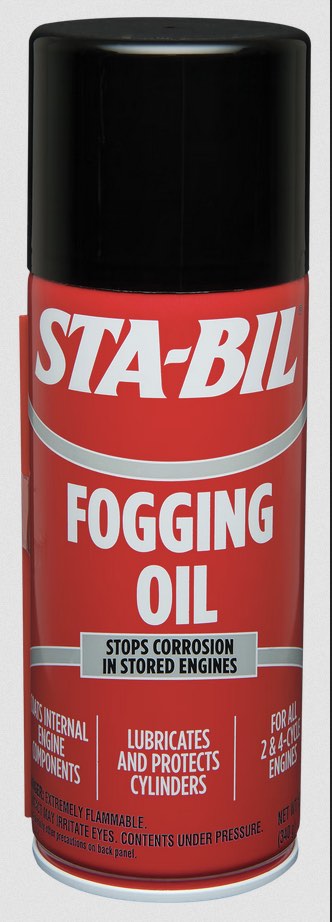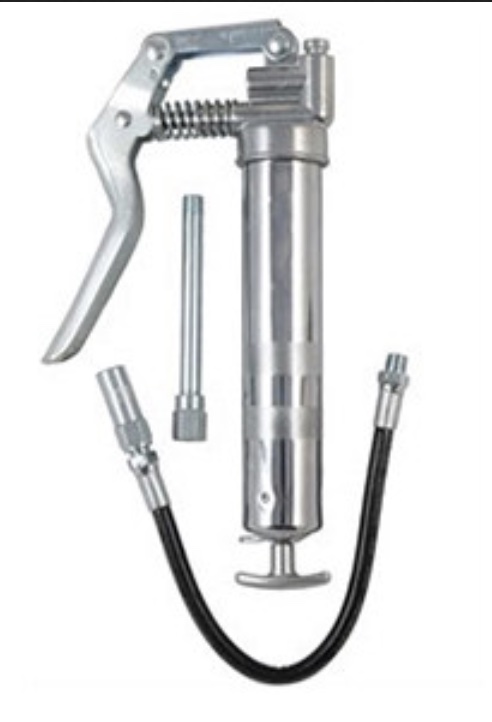When it’s time to put your baby away for the season, there are a few basic steps every snowmobile owner should check. The best snowmobile storage solutions involve maintaining a protected and controlled environment… and when completed each spring, they can help keep your sled in good condition until the next season. By keeping your Ski-doo clean and lubricated you can avoid corrosion and binding, among other issues. A soft cover and indoor storage give you peace of mind that your paint, plastics, and of course all your favourite stickers and decals are safe from cracking, peeling, and fading from sunlight exposure.
Simply parking your sled in a garage and dousing it with fuel stabilizer isn’t enough to ward off wear. Spending time in the spring to prep for snowmobile storage will keep it reliable and enjoyable to ride as well as helping to retain its value. You’ll need a can of storage fogging oil, a few ounces of fuel stabilizer, grease, simple hand tools, aerosol lubricant and a protective place for the snowmobile to hibernate until fall.
The processes explained here apply to two-stroke and four-stroke engines that are carburetted or fuel injected.
Step 1: Treat The Fuel

STA-BIL® products stop your fuel from deteriorating when your vehicle is not in use.
Snowmobile storage done right involves a bit of attention to your the fuel system. Gasoline contains solvents that can cause it to be volatile. However, when those solvents evaporate, the vapors rise from the carburetor bowl and may corrode some metals. What you might have seen in the bowl of a carburetor is fuel and corrosion products that ran down the inside of the carburetor and settled at its lowest point. Fuel injection engines usually don’t suffer from this issue because throttle bodies are typically airtight.
Stabilizers are designed to reduce the evaporation of solvents that can make gasoline volatile. While using too much stabilizer won’t necessarily harm your fuel system, fuel additives inherently reduce the octane rating of gasoline by reducing its concentration, so follow the directions on the container to add the correct amount of stabilizer in relation to how much gas is in your tank. After you pour stabilization into your tank, slosh it around and run your engine for a few minutes so treated gas flows through your system.
Step 2: Fog The Engine
 If you’re looking to keep your engine running smoothly, it’s always a good idea to apply storage fogging oil to the inside of your snowmobile. This thin layer of oil helps protect parts like connecting rods, rod pins and cylinder walls from air and moisture, which can work together over time to cause corrosion that leads to engine failure. For this reason, it’s important talk with anyone who owns or repairs crankshafts – they’ll be able to tell you how essential coating is in order prevent problems down the road.
If you’re looking to keep your engine running smoothly, it’s always a good idea to apply storage fogging oil to the inside of your snowmobile. This thin layer of oil helps protect parts like connecting rods, rod pins and cylinder walls from air and moisture, which can work together over time to cause corrosion that leads to engine failure. For this reason, it’s important talk with anyone who owns or repairs crankshafts – they’ll be able to tell you how essential coating is in order prevent problems down the road.
Don’t rev an engine or let it idle during the summer- these activities won’t heat up the engine enough to burn off moisture, which can lead to accumulation of water vapor on the parts and increase your risk of problems.
Gain access to the engine’s carburetors or throttle bodies by removing or disassembling the air box and pulling out the foam or air horns. In some cases you might be able to peel back the carburetor boots in order to give the fogging oil an unobstructed path to enter the intake manifold. The process to remove the air box varies brand-to-brand and model-to-model, but is fairly easy on older sleds; however, many newer machines are tricky due to tight spaces that are packed with wires, hoses and cables. Work carefully as you remove parts taking note of their orientation before reassembly
With the engine running, spray oil into each intake manifold. Spray the oil at each induction port for a few seconds at a time and then switch to another injector while simultaneously pushing the throttle lever to keep the engine just above idle. Continue to spray oil into the engine – alternating cylinders every few seconds – for about a minute, or until thick, white smoke comes out of the exhaust. Let it sputter and shut down. If the engine has carburetors, turn off the fuel switch and remove the drain plugs to let the gasoline flow out. This, in addition to adding fuel stabilizer, helps reduce the chance of problems with the fuel system in the fall.
To protect the camshaft, valves and other components in a cylinder head with storage fogging oil, some four-stroke engines should be fogged while others don’t need to be. Some two-stroke Ski-Doo sleds have a self-fogging feature. The owner’s manual might tell you which ones of these your engine is. Changing the oil and filter are also often recommended on four stroke engines before they’re stored for the winter season.
Step 3: Grease The Chassis
 To keep the suspension and steering systems working smoothly, give them a few shots of grease. This will push water from within the small shafts and suspension tubes, which will stop condensation from building up during temperature cycles in early spring and late fall.
To keep the suspension and steering systems working smoothly, give them a few shots of grease. This will push water from within the small shafts and suspension tubes, which will stop condensation from building up during temperature cycles in early spring and late fall.
Snowmobiles built in the past few years generally have fewer grease zerks than earlier machines. You might find two or three in the rear suspension and a couple on the front end, but a sled from the mid-1990s could have six grease zerks in the skidframe and more than four on the front suspension. Use a flashlight to look under the engine for extra grease Zerks on the steering system.
It’s not possible to over-grease a zerk on a snowmobile suspension. Pump grease into the zerk until you see new grease come out of the tube or shaft. If water comes out, then this is an important step in ensuring winter off-season storage readiness for your snowmobile.
Step 4: Protect The Metal
If you want your snowmobile to look its best, you should wash it with soap and water. This is especially important if the machine was hauled on an open trailer and has accumulated residue from road grime and salt. Then make sure to apply a lightweight oil like WD-40 or Simple Green to metal surfaces in order to protect them against corrosion. Finally, when you take the sled out of storage in the fall, clean it with a degreaser like Simple Green
Step 5: Where To Park
The best place to store a snowmobile during the off-season is first and foremost under a tarp or tight fitting and waterproof cover, especially if you are using outdoor storage for the summer months. However, indoor storage with protection from the elements is ideal. Both of these locations provide protection from the elements and don’t allow moisture buildup which can cause corrosion.
Take your machine inside and cover it with a soft cloth or some plastic wrap to protect it from dust. A few mothballs under the hood will keep rodents away so they won’t chew on the seat fabric or airbox parts. Raise the rear end of the machine by placing a jackstand under the bumper, then unhook each spring. This relieves tension on these springs and helps them last longer, as well as taking weight off of track lugs which can help prevent tip folding over during transport. Finally place the chassis onto a wooden box or milk crate so that both front suspension pistons are hanging freely
Snowmobile Storage Information
The Revelstoke Garage is now offering snowmobile storage for your sleds, trailers, snow bikes… you name it! We recognize the need for a dependable and hassle-free snowmobile storage solution in the Columbia-Shuswap region and are happy to bring local and businesses in Revy a low cost and secure option just minutes from town. Contact us for more details.
Credit: This post is based on a fantastic article originally found on snowgoer.com. Source: https://snowgoer.com/snowmobile-tech-tips/prepping-a-snowmobile-for-the-off-season/


